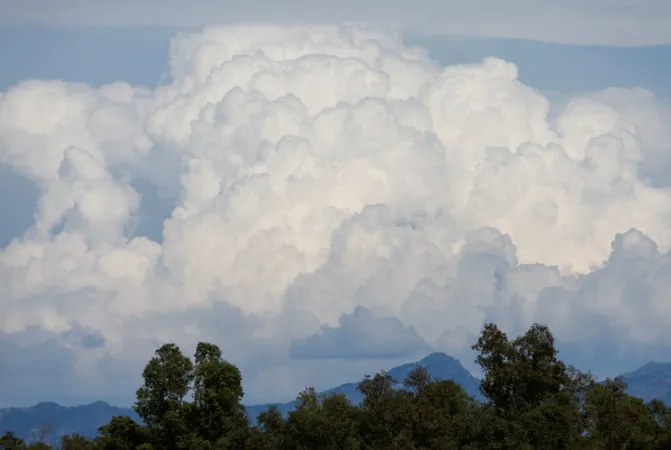
Shocking Discovery: Microplastics Might Be Influencing Weather Patterns and Climate!
2024-11-10
Author: Yu
Recent research has unveiled a startling link between microplastics in the atmosphere and cloud formation, suggesting that these tiny particles may alter weather and climate dynamics by facilitating cloud generation in ways previously unimagined. How could something as small as a speck of plastic impact our global climate systems? Let’s dive into the details!
Scientists specializing in atmospheric chemistry, who examine how various particles promote ice formation when interacting with water, have studied the process known as nucleation that plays a crucial role in cloud formation. Typically, clouds comprise a mix of liquid water droplets and ice particles, and the presence of ice is particularly significant as it’s foundational for precipitation.
Microplastics—fragments measuring less than 5 millimeters, often no larger than a pencil eraser—are ubiquitous, found in remote locations from the depths of the Antarctic to the peak of Mount Everest. Their microscopic size allows these particles to easily circulate within the atmosphere, raising concerns about their effects on weather patterns across the globe.
Clouds play an essential role in Earth's intricate climate systems, affecting everything from temperature to precipitation. The presence of ice particles within clouds is critical, as most precipitation begins as ice crystals. Interestingly, in some cloud systems, temperatures can plunge as low as minus 36 degrees Fahrenheit (about minus 38 degrees Celsius) without forming ice—this phenomenon occurs due to a lack of substances necessary for ice nucleation, like mineral dust or biological particles.
So, where do microplastics come into play? When present in cloud droplets, these particles might facilitate the formation of ice crystals, ultimately influencing rainfall and snowfall rates. The implications are immense, as the nature and concentration of clouds directly affect the Earth’s energy balance. More ice in clouds could reflect more sunlight, cooling the Earth's surface, while fewer ice crystals and increased liquid water could trap more heat—a dangerous cocktail for our climate!
To investigate this possibility, researchers examined four of the most common types of atmospheric plastics: low-density polyethylene, polypropylene, polyvinyl chloride, and polyethylene terephthalate. These materials were tested both in their pristine form and after exposure to ultraviolet light, ozone, and acids, which are prevalent in the atmosphere and can alter plastic chemistry.
The experiments revealed that around half of the water droplets containing microplastics froze at a frigid minus 8 degrees Fahrenheit (minus 22 degrees Celsius), demonstrating that these plastics can indeed catalyze ice formation—potentially more effectively than droplets lacking such particles. However, environmental factors like UV radiation and acidic exposure appeared to dampen this ability, indicating the need for further in-depth studies to assess how microplastics interact chemically in varying atmospheric conditions.
Looking ahead, significant questions remain. We need to gather more data on the concentrations of microplastics at cloud formation altitudes and compare these levels to other ice-nucleating agents like mineral dust. Only then can researchers fully understand the implications of microplastics on global weather patterns.
As we confront an ever-growing plastic pollution crisis, this new research serves as a reminder of the profound impact our waste has on the planet—not just on oceans and landscapes, but also on the very weather patterns that dictate life on Earth. This revelation could lead to a groundbreaking reevaluation of environmental policies and inspire urgent action to combat plastic pollution. Stay tuned for more updates on this significant study that might just change our understanding of climate change!


 Brasil (PT)
Brasil (PT)
 Canada (EN)
Canada (EN)
 Chile (ES)
Chile (ES)
 Česko (CS)
Česko (CS)
 대한민국 (KO)
대한민국 (KO)
 España (ES)
España (ES)
 France (FR)
France (FR)
 Hong Kong (EN)
Hong Kong (EN)
 Italia (IT)
Italia (IT)
 日本 (JA)
日本 (JA)
 Magyarország (HU)
Magyarország (HU)
 Norge (NO)
Norge (NO)
 Polska (PL)
Polska (PL)
 Schweiz (DE)
Schweiz (DE)
 Singapore (EN)
Singapore (EN)
 Sverige (SV)
Sverige (SV)
 Suomi (FI)
Suomi (FI)
 Türkiye (TR)
Türkiye (TR)
 الإمارات العربية المتحدة (AR)
الإمارات العربية المتحدة (AR)